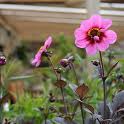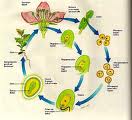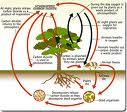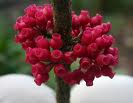Process of Photosynthesis
1. Photosynthesis is a process that converts carbon dioxide into organic compounds, especially sugars, using the energy from sunlight.[1] It occurs in plants, algae, and many species of bacteria, but not in Archaea.
2. Photosynthetic organisms are called photoautotroph, since they can create their own food. In plants, algae and cyan bacteria photosynthesis uses carbon dioxide and water, releasing oxygen as a waste product.
3. As well as maintaining the normal level of oxygen in the atmosphere, nearly all life either depends on it directly as a source of energy, or indirectly as the ultimate source of the energy in their food[2] (the exceptions are chemoautotroph that live in rocks or around deep sea hydrothermal vents). The amount of energy trapped by photosynthesis is immense, approximately 100 terawatts:[3] which is about six times larger than the power consumption of human civilization.[4]
4. As well as energy, photosynthesis is also the source of the carbon in all the organic compounds within organisms' bodies. In all, photosynthetic organisms convert around 100,000,000,000 tones of carbon into biomass per year.[5]
5. Although photosynthesis can happen in different ways in different species, some features are always the same.
6. Proteins called photosynthetic reaction centers that contain chlorophylls. In plants, these proteins are held inside organelles called chloroplasts, while in bacteria they are embedded in the plasma membrane. Some of the light energy gathered by chlorophylls is stored in the form of adenosine triphosphate (ATP). The rest of the energy is used to remove electrons from a substance such as water.
7. These electrons are then used in the reactions that turn carbon dioxide into organic compounds. In plants, algae and cyan bacteria, this is done by a sequence of reactions called the Calvin cycle, but different sets of reactions are found in some bacteria, such as the reverse Krebs cycle in Chlorobium.
8. Many photosynthetic organisms have adaptations that concentrate or store carbon dioxide. This helps reduce a wasteful process called photorespiration that can consume part of the sugar produced during photosynthesis.









